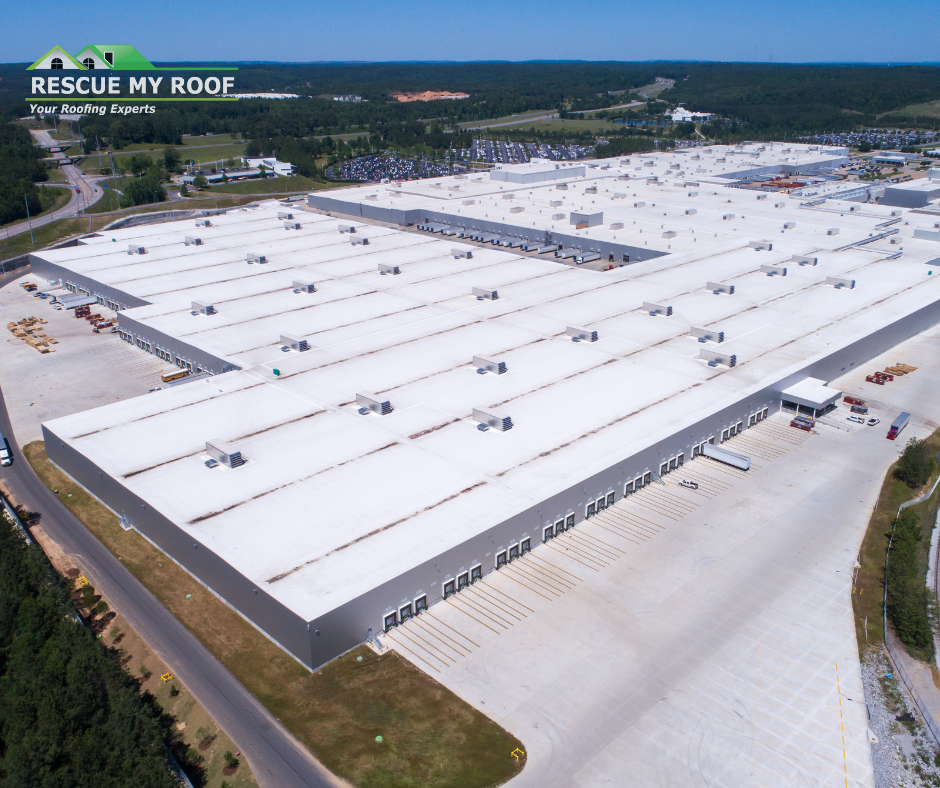5 TPO Roof Facts Homeowners Need to Know
Are you in need of a flat roof, but are unsure of what material to choose? With so many materials out there, it’s easy to feel overwhelmed.
That’s where we come in. Rescue My Roof has been helping homeowners make well-informed decisions about flat roofs for over a decade.
We understand that replacing a flat roof can be a big investment, and the last thing you want is to feel uncertain about your decision. That’s why we’ll uncover key facts about TPO roofs, empowering homeowners with the knowledge they need to make informed decisions for their homes. Ultimately, you’ll be confident that choosing a TPO roof is the right choice.
What Are TPO Roofs?

When it comes to roofing materials, homeowners are often presented with a myriad of options. Thermoplastic Olefin (TPO) roofing has gained popularity for its durability, energy efficiency, and versatility.
TPO roofing is also resistant to UV radiation and can reflect solar heat, which can help to reduce energy costs. TPO roofing is available in a range of colors, which can help to reduce heat absorption and reflect sunlight.
TPO Roofs: What You Need to Know
1. TPO Roof Benefits
There are several benefits to using TPO roofing. Below are some reasons we believe choosing TPO for your flat roofing needs will help you:
- Durability: TPO roofing is known for being very durable and can last for many years with proper maintenance.
- Energy efficiency: TPO roofing is reflective. Which can help to reduce energy costs by reflecting sunlight and reducing heat absorption.
- Easy to install: TPO roofing is easy to install, which can help to reduce labor costs.
- Environmentally friendly: TPO roofing is made from synthetic rubber, which is a renewable resource. It is also fully recyclable, which can help to reduce waste.
- Weather resistant: TPO roofing is resistant to UV radiation. It can withstand extreme temperatures, making it suitable for use in a wide range of climates.
- Flexibility: TPO roofing is flexible. It can expand and contract with temperature changes, which can help to prevent cracking and other damage.
- Aesthetically pleasing: TPO roofing is available in a range of colors, which can help to enhance the appearance of a building.
2. TPO Roof Drawbacks
Here are the disadvantages:
- Expense: TPO roofing can be more expensive than some other types of roofing materials, such as asphalt shingles.
- Limited lifespan: While TPO roofing is known for being durable, it has a limited lifespan. Compared to other roofing materials, such as metal or slate.
- Vulnerability to punctures: TPO roofing can be punctured more easily than some other roofing materials, such as metal or slate.
- Susceptibility to UV degradation: TPO roofing is resistant to UV radiation, but it can still be prone to degradation over time. This can lead to the need for repairs or replacements.
- Limited options for repair: If TPO roofing is damaged, it can be more challenging to repair than some other roofing materials. In some cases, the entire roof may need to be replaced.
- Compatibility issues: TPO roofing is not compatible with other roofing systems, and it may not be suitable for use on steep sloped roofs.
3. TPO Roof Cost
The cost of a TPO roof can vary widely depending on the roof’s size, complexity, condition, and more. But, on average, you can expect to pay between $10 and $15 per square foot for a TPO roof.
Keep in mind that the cost of a TPO roof will also vary depending on the thickness and quality of the material. As well as the type of insulation you desire for your roof system. To get a better idea of how much your roof will cost, get an estimate from a local roofing company.
4. Durability and Longevity
TPO roofs are known for their durability and resistance to wear and tear. They have a long lifespan, often exceeding 20 years with proper maintenance. Additionally, TPO roofs are resistant to mold, algae, and punctures, enhancing their overall resilience.
Without excessive sun exposure or foot traffic, you can expect a TPO roof to last 20-30 years.
5. Maintenance Requirements
TPO roofs generally have low maintenance requirements. Periodic inspections and cleaning are recommended to ensure optimal performance. Regular maintenance can address any issues promptly and extend the lifespan of the roofing system.
Installing A TPO Roof
Choosing a roofing material is a significant decision for homeowners, and understanding the facts about TPO roofing empowers them to make informed choices. From energy efficiency to durability and environmental impact, TPO roofs stand out as a reliable and versatile option for residential and commercial applications alike.
As you consider roofing options, exploring the benefits of TPO could be a step toward a resilient, sustainable, and cost-effective roofing solution.
Learn more about flat roofs with “EPDM vs. TPO Roofing: Which Is Better” and “5 Things You Must Know About Flat Roofs.”
Are you looking for a flat roof contractor in southeastern Wisconsin? Contact Rescue My Roof today to get a free estimate.


